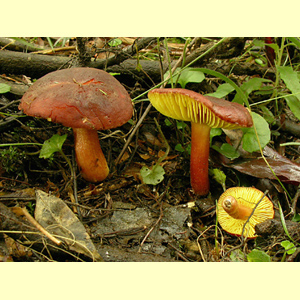
images/Phylloporus/Phylloporus.jpg
Medium to very large agaric, growing on the ground or rarely on wood, with a brown spore print that usually has olivaceous tones. Pileus orange, brown, red or pink or purple, not viscid. Lamellae adnate, sinuate or notched, subdecurrent or decurrent, often bright yellow, usually with interconnections, especially near stipe. Stipe central, rarely excentric. Partial veil remnants absent. Flesh often bruising brown, blue, green or red. Spores oblong to bacilliform, pale or yellow-brown, non-amyloid, smooth; germ pore absent. Cheilocystidia present. Lamellar trama regular or bilateral. Pileipellis a cutis or a trichoderm. Clamp connections absent.
Austropaxillus also has large fruit-bodies with a brown spore print and decurrent lamellae, but it differs in that some species have clamp connections and, in addition, fruit-bodies only stain brown, and not blue or green. Ammonia vapour produces a blue or purple reaction on the pileus of
Phylloporus. Lamellae of
Phylloporus are often rather bright yellow at maturity (rather than the yellow-brown of
Austropaxillus), and tend to be deeper and more widely spaced than in
Austropaxillus. The genus
Hygrophoropsis, which can have bright orange, decurrent lamellae, is distinguished by the white or pale spore print. Among robust agarics with no partial veil, yellow lamellae can also be found in
Porpoloma and
Russula, but in those genera the spore print is white or pale and spores are amyloid. Some
Hygrocybe species have yellow, decurrent lamellae, but the pileus and stipe are often viscid, and the spore print is white.
Phylloporus Quél., Fl. Mycol. France 409 (1888).
At least 11 species: Phylloporus australiensis, P. bellus, P. aff. bogoriensis, P. aff. cingulatus, P. clelandii, P. cyanescens [= P. bellus var. cyanescens], P. foliiporus, P. hyperion, P. aff. leucomycelinus, P. orientalis and P. sulcatus. All belong to the P. rhodoxanthus group, and older records are often under this name.
W.A., S.A., Qld, N.S.W., Vic. and Tas. (and probably also N.T.).
In native forests, or with remnant trees in urban bushland.
On the ground.
Ectomycorrhizal.
Fuhrer, B. (2005),
A Field Guide to Australian Fungi. Bloomings Books, Hawthorn. [
Description and
Illustration of
P. clelandii and
P. rhodoxanthus]
Grgurinovic, C.A. (1997a), Larger Fungi of South Australia. The Botanic Gardens of Adelaide and State Herbarium and The Flora and Fauna of South Australia Handbooks Committee, Adelaide. [Description, Illustration and Microcharacters of P. rhodoxanthus]
McCann, I.R. (2003), Australian Fungi Illustrated. Macdown Productions, Vermont. [Illustration of unnamed species of Phylloporus]
Neves, M.A., Binder, M., Halling, R., Hibbett, D. & Soytong, K. (2012), The phylogeny of selected Phylloporus species, inferred from NUC-LSU and ITS sequences, and descriptions of new species from the Old World, Fungal Diversity 55: 109–123. [Description and Microcharacters of P. cyanescens]
Watling, R. & Gregory, N.M. (1991), Observations on the boletes of the Cooloola sandmass, Queensland and notes on their distribution in Australia. - Part 3: lamellate taxa, Edinburgh J. Bot. 48: 353–391. [Description and Microcharacters of all Australian species].

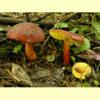
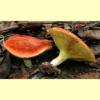

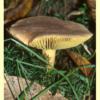
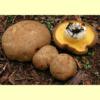
_Phylloporus_(showing_blue-green_bruise)_processed_sml.jpg)

